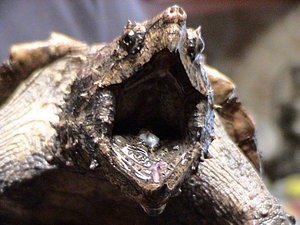The parathyroid gland consists of four interconnected parts, two on either side and directly behind the thyroid gland, and secretes the hormone parathormone. Parathormone regulates the amount of calcium and phosphorous in the bloodstream and controls the movement of calcium from the bones into the bloodstream.
Parathormone has the following effects. 1. Promotes the active metabolite of vitamin D in the kidneys, aiding in the absorption of calcium. 2. Activates and increases the formation of osteoclasts (multinucleate cells that break down calcified bone matrix), increasing bone destruction and making calcium and phosphorous available to the rest of the body.
Normally, food derived calcium is first deposited in the bones. If there is insufficient parathormone, the calcium and phosphorous locked up in the bones can’t be delivered to the rest of the body and the body can be calcium and phosphorous starved even though there are sufficient amounts in the bones. 3. It delays the formation of osteoblasts (bone forming cells). 4. Increases renal (kidney) and intestinal absorption of calcium and excretion of phosphate. Phosphate is essential to acid/alkaline balance and carbohydrate digestion. Parathormone and vitamin D are the body’s principal regulators of calcium and phosphorous balance. Without sufficient vitamin D the effects of parathormone are decreased.
Parathormone secretion is a balancing act. Too much parathormone creates excess osteoclasts which increase bone destruction and can lead to excess calcium in the blood and deposits of calcium in joints and arteries. Too little promotes excessive amounts of osteoblasts, slowing the formation of new bone cells and locking up calcium in the bones that’s needed by the rest of the body. The parathyroid requires circulating blood calcium and phosphorous to remain healthy, which are best supplied through whole food sources.
If sufficient daily amounts of calcium and phosphorous aren’t taken into the body, and available to the parathyroid, the gland begins to deteriorate. When that happens an imbalance is created. If the imbalance results in an incapability to supply the hormone necessary for transporting and distributing calcium/phosphorous to the rest of the body the following can be the result. Nerve diseases such as Parkinson’s’ and palsy are connected to parathyroid disorders, the kidneys can be affected due to faulty calcium metabolism and tooth decay can be an indicator of a parathyroid disturbance because of its connection to calcium distribution.
Though there hasn’t been a definite connection established between epilepsy and parathyroid dysfunction, supplemental parathormone has been effective as a treatment. A calcium metabolism deficiency to the kidneys can exacerbate problems connected with diabetes.
A decrease in serum calcium, circulating blood calcium, stimulates parathormone production and results in hypertrophy of the parathyroid; common in rickets. Too much serum calcium causes decreased activity and shrinking of the parathyroid. The parathyroid works in conjunction with the thyroid and an imbalance in one, will upset the other. See my article on thyroid. When we look at the complete picture it’s apparent that everything is connected to everything else.
Symptoms of an under active parathyroid are: muscle tension and cramps, allergies, loss of appetite, neurotic behavior, cataracts (excessive calcium in the cells), rough dry skin, tingling of the extremities and around the mouth, burping, constipation, hemorrhoids, decreases in normal sight and hearing, erratic heartbeat and stiff joints.
Symptoms of an overactive parathyroid are: weakness, weak bones (osteoporosis), kidney stones, depression, over-acid stomach, tiredness, weight gain and increased appetite.
Parathyroid dysfunction can be caused by poor diet, lack of nutrients and lack of exercise, which lead to bone resorption and increased serum calcium levels (too many calcium and vitamin D supplements can have the same effect), and nerve pressure in the mid-cervical spine. Pregnant mothers who have high serum calcium levels can affect the parathyroid development of the fetus. This may or may not remedy itself after birth.
Whole food nutritional help can be found in natural cheeses, soybean milk and non-processed dairy and soybean products. One tablespoon of Brewer’s Yeast in a glass of whole milk is said to provide a complete and balanced mineral food for the parathyroid. Raw powered bone meal, raw is almost impossible to find and cooked is of no use, mixed two tablespoons to a glass of soy milk and drunk twice a day, is a good source of calcium and other minerals. All the right food and supplements will prove useless if there isn’t sufficient parathormone in the blood.

